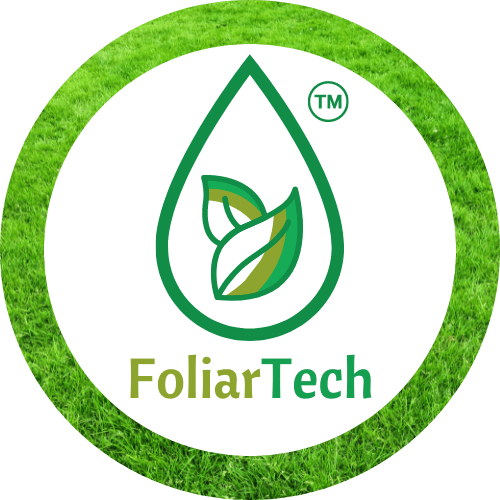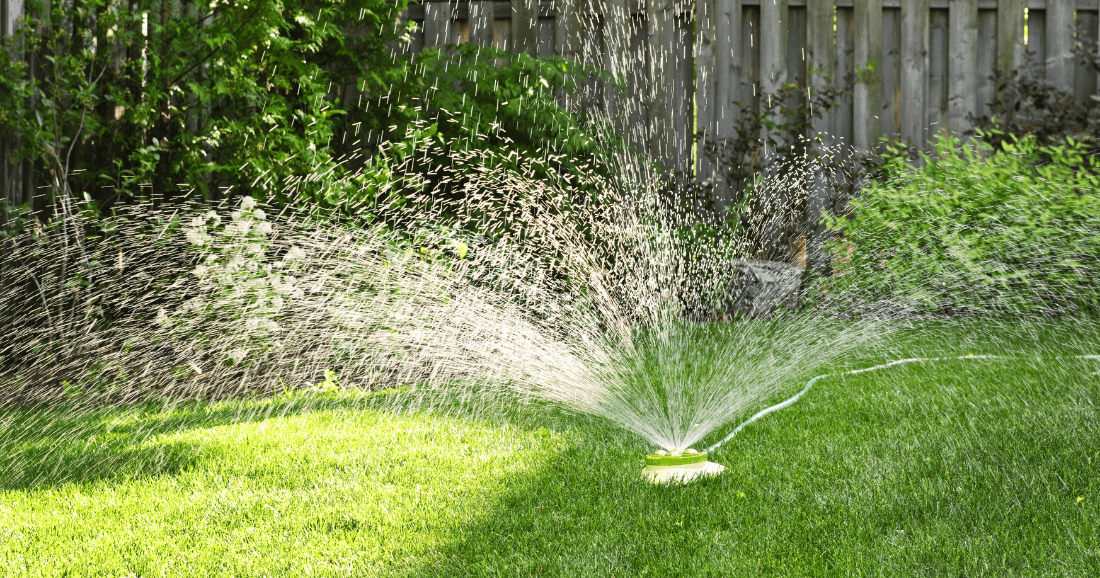A green lawn is not only aesthetically pleasing but also has numerous benefits for the environment. It helps to absorb carbon dioxide, produces oxygen, prevents soil erosion, and reduces noise pollution.
To achieve a green lawn, it’s important to understand that it requires ongoing care and maintenance. In the following sections, we’ll explore some effective tips and techniques that can help you achieve a lush green lawn.

Understanding Your Lawn
Before you start greening up your lawn, it's important to understand your lawn's current condition. Take a close look at your lawn to identify any problem areas, such as bare patches or areas with uneven growth.
Assess the soil to check for any signs of compaction, which can prevent roots from accessing water and nutrients. Also, consider the type of grass that is growing on your lawn and whether it’s suitable for your climate.
Preparing Your Lawn for Green Up
The first step to greening up your lawn is to prepare it for the upcoming growing season. Rake away any dead leaves or debris, which can smother the grass and block out the sun. Remove any weeds or moss that may have grown over the winter months.
Use Humic Elite PG at approximately 300-400ml mixed into 45-65 litres of water and apply generously on 1000 sqft of lawn for aeration.
No need to rent a mechanical aerator anymore!
Apply fresh seed uf needed and rake in a thin layer of fresh , weed free topsoil over top.

Watering Your Lawn Effectively
Watering your lawn is essential for maintaining its health and appearance, but it's important to do it properly. Water your lawn early in the morning as opposed to late in the evening as in my experience , watering later on in the evening keeps too much moisture in the soil and lawn blades and can cause fugus and mold if heat and humidity are already high in your area.
Avoid watering your lawn during the heat of the day, as this can damage the grass. Use a sprinkler or watering can to distribute the water evenly, and aim for around an inch of water per week, including rainfall. In extreme summer heat 1.5-2 inches is where you will need to be as far as watering goes and may require more than that. If you see your lawn loosing colour and flattening out, it may be a sign of heat stress and thus requires more water.

Fertilizing Your Lawn
Fertilizing your lawn is an important step in greening it up. It helps to provide the necessary nutrients for healthy growth and can also improve the soil's fertility.
Choose a fertilizer that is appropriate for the type of grass on your lawn and follow the application instructions carefully. Typically, it's recommended to fertilize your lawn every six to eight weeks during the growing season. But with liquid applications you may need to apply more frequently.
Generally I apply liquid fertilizer every 3-4 weeks.
Controlling Weeds and Pests
Weeds and pests can cause damage to your lawn and prevent it from looking its best. There are several ways to control weeds and pests without resorting to harmful chemicals.
Hand-pull any weeds or use a weed trimmer to remove them, being careful not to damage the surrounding grass. Use natural pest control methods, such as companion planting or introducing beneficial insects, to reduce the need for chemical pesticides. However the best way to keeping weeds out of our lawns has always been cutting your lawn frequently and cutting your lawn high!
Aim for your cut height to be 3” or more depending where you live. By keeping your lawn higher, you keep more moisture in it and shade out small weeds that can spread.
Never cut off more than ⅓ of the grass blade on a cutting day as this stresses your lawn out and lets in weeds and pests. Example if your lawn is at 4.5” high, never cut it below 3”.
Aim to cut your lawn at the same height twice per week and always mulch in your clippings.
By mulching them in you will be re using your NPK nutrients that are in the grass blades over and over and adding organic matter back into your soil!!

Using Liquid Humic Acid
Using liquid humic acid is a great way to make your lawn greener and healthier. Humic acid is a natural soil amendment that improves soil health by increasing nutrient uptake and improving soil structure.
It is a rich source of organic matter that helps to enhance the microbial activity in the soil, which in turn helps to break down organic matter and release nutrients that are essential for plant growth.
One of the biggest benefits of using liquid humic acid on your lawn is that it can help to improve soil pH levels.
A soil pH that is too low or too high can prevent plants from absorbing the nutrients they need, which can lead to poor growth and yellowing of the leaves. Humic acid helps to balance soil pH, which makes it easier for plants to absorb the nutrients they need.
Another benefit of using liquid humic acid is that it helps to increase the availability of micronutrients in the soil.
Micronutrients are essential for plant growth, but they are often lacking in soil. Humic acid helps to break down organic matter and release these micronutrients into the soil, which makes them more available for plant uptake.
In addition, liquid humic acid can help to improve soil structure by increasing the soil's ability to hold water and nutrients. This can lead to better root development, which in turn leads to healthier plants and a greener lawn.
Did you know that 1litre of humic acid can hold up to 7x its own weight in water???
We recommend you use HUMIC ELITE PG™ Organic Liquid Humic Acid. You will see the results in a shorter period of time.
Aerating Your Lawn
Aerating your lawn is an effective way to improve the health of your grass. It involves creating small holes in the soil to allow air, water, and nutrients to penetrate the roots.
This can help to relieve soil compaction, improve drainage, and encourage deeper root growth. You can aerate your lawn using a fork, aeration machine, or by hiring a professional service.
However using Humic Elite PG in higher amounts on your first couple of applications can aerate your lawn without the use of machines or the need for hiring people to do it for you.
Choosing the Right Grass Type
Choosing the right grass type for your lawn is essential for achieving a lush green lawn. Different types of grass have different requirements for light, water, and nutrients, so it's important to choose a type that is suitable for your climate and soil conditions.
Consider factors such as sun exposure, soil type, and the amount of foot traffic your lawn receives when selecting a grass type.
Mowing Your Lawn
Mowing your lawn is an essential part of maintaining a healthy and attractive lawn. It helps to encourage even growth, prevents thatch buildup, and improves air circulation.
However, it's important to mow your lawn correctly to avoid damaging the grass.
Set your mower blades to the correct height for your grass type, and avoid cutting more than one-third of the blade length at once. Also, be sure to keep your mower blades sharp to ensure a clean cut.
Using Natural Remedies
Using natural remedies can be an effective way to green up your lawn without using harmful chemicals.
For example, you can use organic compost or mulch to enrich the soil and promote healthy growth. You can also use natural weed killers, such as vinegar or boiling water, to control weeds.
Dealing with Bare Patches
Bare patches in your lawn can be unsightly and can also create an environment for weeds to grow. To fix bare patches, start by removing any dead grass or debris.
Then, loosen the soil using a fork or aerator. Add some fresh soil or compost to the area, and sprinkle grass seed over the top. Water the area regularly to promote growth.
Preventing Lawn Damage
Preventing lawn damage is essential for maintaining a healthy lawn. Avoid over-fertilizing your lawn, as this can lead to excessive growth and weak grass.
Also, be careful not to overwater your lawn, as this can lead to disease and fungal growth. Moreover, avoid walking or driving on your lawn, especially when it's wet, as this can cause soil compaction and damage the grass.
Re-seeding Your Lawn
If your lawn has become thin or patchy, re-seeding it can be an effective way to green it up. To re-seed your lawn, start by removing any dead grass or debris.
Loosen the soil using a fork or aerator, and add fresh soil or compost if necessary. Sprinkle grass seed over the area, and water it regularly to promote growth.
Frequently Asked Questions
What is the best time of year to green up your lawn?
The best time to green up your lawn is in the early spring or fall when the grass is actively growing, and the temperatures are mild.
How often should I fertilize my lawn to keep it green?
It is recommended to fertilize your lawn every 6-8 weeks during the growing season to keep it green and healthy.
How much water does my lawn need to stay green?
It depends on the type of grass and the climate in your area, but generally, lawns need about 1-2 inches of water per week to stay green.
How can I reduce my water usage and still keep my lawn green?
You can reduce your water usage by watering your lawn early in the morning or in the evening when it is cooler, using a rain gauge to measure how much water your lawn is getting, and using drought-tolerant grass varieties.
How can I get rid of weeds and still keep my lawn green?
Using a pre-emergent herbicide in the early spring can help to prevent weeds from germinating. For existing weeds, you can use a selective herbicide that targets the specific type of weed without harming your grass.
Can I use organic methods to green up my lawn?
Yes, you can use organic methods such as using compost, organic fertilizers, and natural pest control methods to green up your lawn without using synthetic chemicals.
How long does it take to green up my lawn?
It can take a few weeks to a few months to green up your lawn, depending on the condition of your lawn and the methods used. It is important to be patient and consistent with your lawn care routine.
What benefits come from using professional lawn care techniques?
Using professional lawn care techniques results in a visually appealing yard that also promotes environmental sustainability.
Why is environmental sustainability important in lawn care?
Environmental sustainability is important in lawn care because it ensures the health of the ecosystem and promotes long-term lawn health.
Conclusion
Greening up your lawn requires a combination of proper maintenance, watering, fertilizing, and weed control.
By following these tips and utilizing natural methods such as using liquid humic acid, you can achieve a lush, green lawn that is both beautiful and healthy.
Remember to be patient and consistent with your lawn care routine, and you will be rewarded with a lawn that you can be proud of.
Discover the key to achieving vibrant green lawns by implementing professional lawn care techniques. Elevate your lawn maintenance routine to cultivate a yard that is not only visually appealing but also promotes environmental sustainability.

